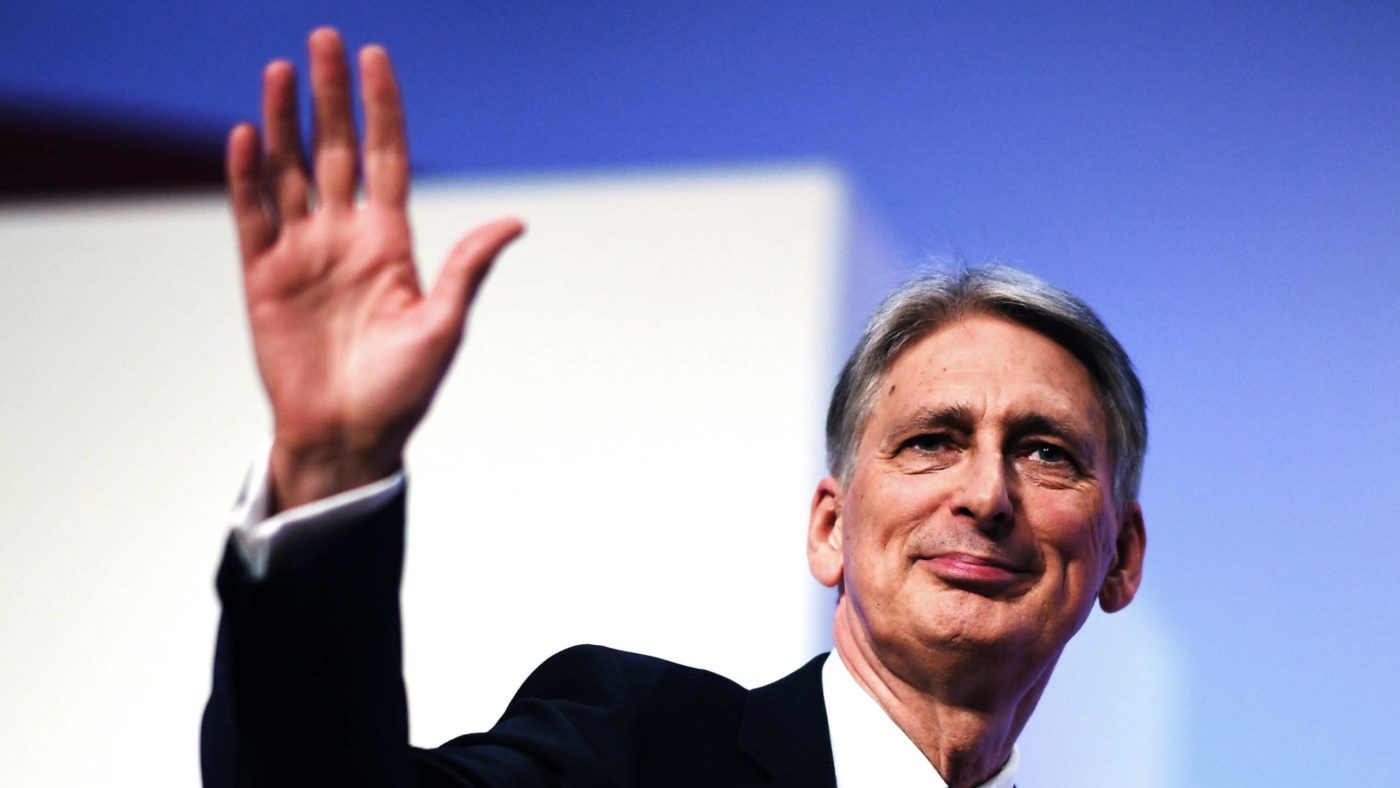In one of the more widely-discussed passages of her Conservative Party Conference speech, Theresa May said “a decade after the financial crash, people need to know that the austerity it led to is over and that their hard work has paid off.”
It’s not altogether apparent what she means by suggesting that austerity is over, but there appears to be at least some change in rhetoric from Chancellor Philip Hammond’s position in the Spring when he said government debt was still too high and “There is light at the end of the tunnel… but we are still in the tunnel at the moment.”
Perhaps the best way to consider whether it is reasonable to say that austerity is over is to consider what “austerity” meant and whether there has been any change in that respect. There have been two key features of our “age of austerity” since 2010: cuts in public spending and cuts in the deficit.
In the financial year the Conservatives came into office, 2009/10, the government deficit was 10 per cent of GDP and scheduled to go higher in 2010/11, to what would probably have been equivalent to around 12 per cent of GDP. Within that 10 per cent 2009/10 deficit, 8 per cent was structural — i.e. would not have gone away when the economy recovered.
Both that level of deficit and in particular the structural component were unprecedented, and were far, far above the normal-times maximum level of deficit, some 3 per cent of GDP, set out in, for example, the Maastricht Treaty.
Since its 2009/10 peak, the budget deficit has fallen every year, and in 2016/17 it went below the 3 per cent Maastricht threshold. So in deficit terms it could be reasonable to argue that the age of austerity ended in 2016/17.
Public spending also peaked in 2009/10, at 45 per cent of GDP, and was scheduled to rise higher in 2010/11, with some projections suggesting it might exceed 50 per cent of GDP. Spending in 2017/18 was down to 38.5 per cent of GDP. That is about the same as spending was in the years 2004 to 2008. So whilst spending remains historically high — prior to 2004/05 we’d need to go back to 1986/87 to find a year where it was previously higher than 38½ per cent of GDP — we can, again, regard these spending levels as at least the upper end of normal times.
In terms of the deficit and public spending levels, then, if the task of austerity was to take us back to normal levels, we can say job done, at least in broad terms.
That is not, however, the end of the story. Government debt rose relentlessly all through our “age of austerity” (rather belying the name), stabilising at around 86½ per cent of GDP from 2014/15 to 2016/17, before finally falling, a bit, in 2017/18. On the government’s latest plans, government debt would still be over 84 per cent of GDP in 2022/23. That is frankly much too high for an economy that by then is scheduled to have been growing for a dozen years — suggesting that we’d actually be lucky to reach that point without one of those recessions that are an inevitable feature of economic life (contra Gordon Brown).
If we get lucky and there’s no recession by 2022/23, we’d still have very high debt through the 2020s. In the aftermath of the 2008/09 recession. Government debt rose by 45 per cent of GDP. If we added 45 per cent of GDP to a baseline of 84 per cent of GDP, debt would be around 130 per cent of GDP — levels similar to Italy’s today or Greece’s when the worst phase of its terrible crisis was getting going, in 2009.
We need to create the sort of cushion we had in 2007/08 if government deficits are to be able to see us through a future recession as they did after 2008/09. To do that, the government will need to run surpluses through the 2020s.
The UK’s total tax take is currently around 36½ per cent of GDP. It has been no higher than this for well over 30 years. It is not very plausible that the modern British economy could or would generate a materially higher tax take for any sustained period, even if taxes were raised substantially.
If we are to run a surplus for the decade or more than it required for us to smoothly reduce our debts back to a level sufficient to provide a cushion against future recessions, we need spending to fall further — at least another 2 per cent of GDP, perhaps a bit more.
So whilst it is reasonable to say that austerity has achieved a great deal already, and it is not unreasonable for there to be a bit of a pause, for two or three years, whilst we see the economy through the immediate post-Brexit period, it is simple denial to pretend that we will not have to return to austerity soon. More spending cuts will very soon be vital. That’s not even a statement of economic priorities. It’s just maths.


